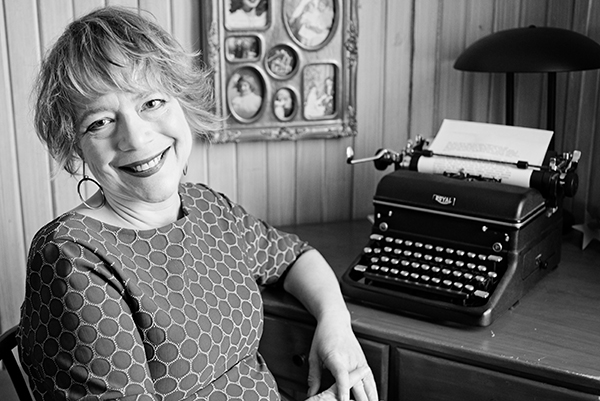


I don’t have to tell you the last year has been nothing short of surreal. But with my COVID-19 vaccination process nearly complete — plus the arrival of spring and a shift in my mindset largely shaped by everything that’s transpired over the last year — new beginnings are in bud. What better way to mark the milestone than by commissioning some fresh photos for my website, my social media pages and wherever else strikes my fancy?
 LAF Lines Photography, aka lidija, has been my go-to photographer for every photo shoot I’ve ever done. Full disclosure: lidija is a dear friend. But she also happens to be an outstanding photographer. Her passion is natural light and she understands it in a way Georges Seurat would appreciate. During our shoot, she pointed out how simply changing how much a window blind was opened could shift the color in the room: reddish when the blinds were fully open and the bright light was bouncing off a neighboring red-brick wall; more yellow when the blinds were partly closed and the light was reflecting off the interior space. I think natural-light photography is a big part of why her portraits capture a person as they really are. That and her knack for making a person immediately feel at ease so their true self shines.
LAF Lines Photography, aka lidija, has been my go-to photographer for every photo shoot I’ve ever done. Full disclosure: lidija is a dear friend. But she also happens to be an outstanding photographer. Her passion is natural light and she understands it in a way Georges Seurat would appreciate. During our shoot, she pointed out how simply changing how much a window blind was opened could shift the color in the room: reddish when the blinds were fully open and the bright light was bouncing off a neighboring red-brick wall; more yellow when the blinds were partly closed and the light was reflecting off the interior space. I think natural-light photography is a big part of why her portraits capture a person as they really are. That and her knack for making a person immediately feel at ease so their true self shines.
I’ll unveil my updated website and photos soon, but I wanted to pass along this sneak peek: a blog post from lidija that shares the experience — and a sampling of photos — from her perspective.
As far as I’m concerned, a photoshoot with LAF Lines Photography is like playtime. Although this was our third photoshoot in my home, she still found clever new places to capture different moods and moments. As always, I had curated music that makes me feel great, but it’s the creative collaboration with lidija — filled with lots and lots of laughter — that makes our photoshoots such a delight.
There’s something else, too. It was the first time I’ve had a friend in my home in a year. Because of our vaccination statuses and protocols, it was also the first time I’ve been able to hug a friend in 12 months. Just writing that makes me teary, in a good way.
It also gives me hope. We’re not out of the pandemic woods yet, but we’re getting there. This past year has taught me many valuable lessons about myself and life in general, and the arrival of spring makes me believe better days are ahead. You can see it in the photo I shared here, on a sunny spring day with the breeze in my hair. I have reason to smile. This past year hasn’t been easy for anyone, but in many ways it’s reminded me how lucky I really am. That, in itself, is a life milestone worth commemorating.
Get a preview of the results of our photo shoot over at the LAF Lines Photography blog.
Every moment is a chance to experience gratitude, even if it doesn’t feel that way.
I’m still learning this lesson, and I have to keep reminding myself. But in every moment — with every breath — there’s something to be grateful for. If you really can’t think of anything else to appreciate, be thankful for another breath. And another, and another.
I’ve always been a goal-setter. I used to make New Year’s resolutions, but like most people I made myself promises I could barely keep for the first day of the year, alone for 365 of them. Then I started setting yearly goals, and soon wised up and allowed myself the latitude to revisit those goals every quarter, every month — every day, even. It’s not that I don’t stick to my goals. In fact, many of them carry over year after year because they’re worthy goals. But you have to give yourself permission to refine, relax or replace those goals with something that works better.
 Lately, the yearly practice I gravitate to the most is keeping a gratitude jar. All it takes is an empty jar, some notepaper and a pen, and the willingness to pause and write down something you’re grateful for. After seeing the idea on a friend’s Facebook page, I filled my first jar in 2015. I’ve been doing it ever since, and just dropped the first note of gratitude into the jar for 2018.
Lately, the yearly practice I gravitate to the most is keeping a gratitude jar. All it takes is an empty jar, some notepaper and a pen, and the willingness to pause and write down something you’re grateful for. After seeing the idea on a friend’s Facebook page, I filled my first jar in 2015. I’ve been doing it ever since, and just dropped the first note of gratitude into the jar for 2018.
There’s something enormously satisfying about watching a jar fill up with your thankfulness over a year. The beauty of a gratitude jar is that you don’t have to write much. It’s just a scrap of paper. I don’t force myself to write every day, but I scribble something when the urge strikes me. Maybe I feel a surge of gratitude or appreciation. Or maybe something meaningful happens and I take a moment to note it, along with the date, and to feel thankful. There are also days when I feel like there’s nothing to be grateful for, and I make myself find something — anything — to appreciate. It doesn’t ever take me long to come up with something.
The sight of the jar filling up reminds me to feel grateful, and motivates me to find more reasons to make that jar overflow (remember: I’m goal-oriented). Then at the end of each year, I go through all the slips of paper one by one, reliving the year’s moments of gratitude — jumbled and out of order, but almost more meaningful that way because those moments add up to a whole that isn’t bound by time and space. Sure, the notes evolve as my life does, but with hindsight it’s the sum total that really resonates with me. The many little reasons for gratitude really add up.
In talking with others who practice gratitude regularly — or who want to — one central concept is consistent: Taking a moment to experience gratitude cultivates more gratitude. The more grateful you feel, the more reasons you’ll find to be grateful.
I know it’s unlikely that I’ll be consistent enough to drop a note in my gratitude jar every day this year. After all, I have decades worth of journals with only the first few pages filled in before they were abandoned. But maybe this year I’ll try adding one note to the jar each day. Because the days when feeling grateful seems impossible are the days when gratitude is needed the most.